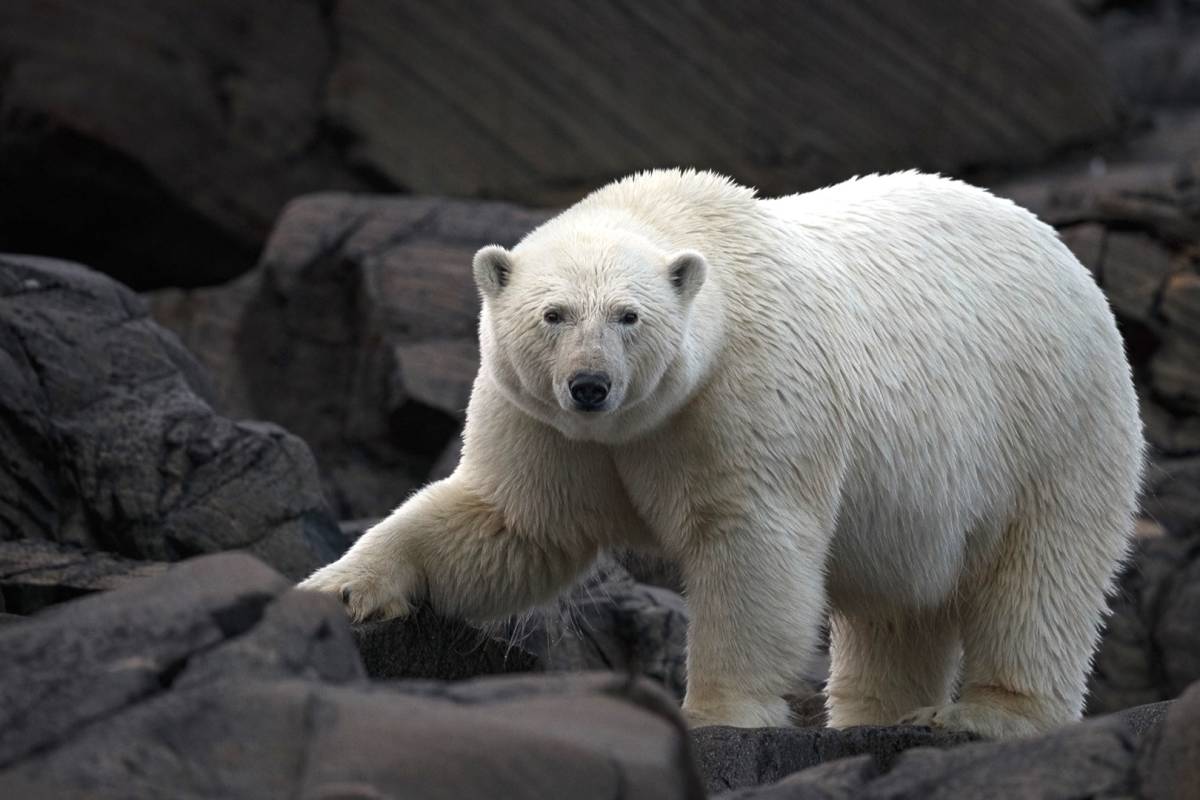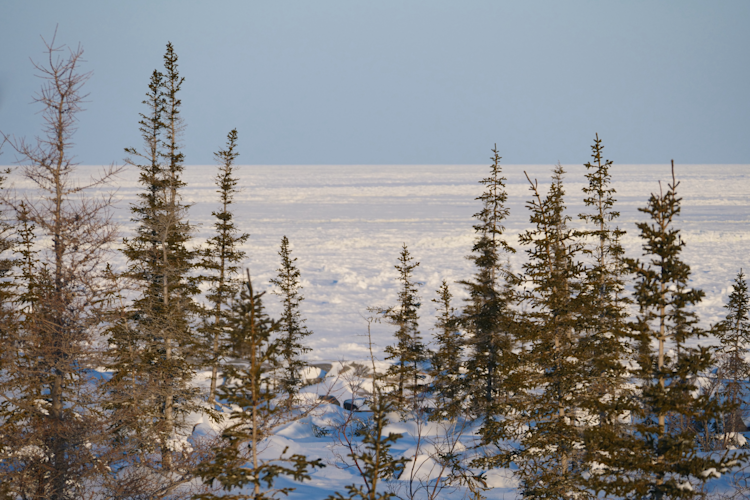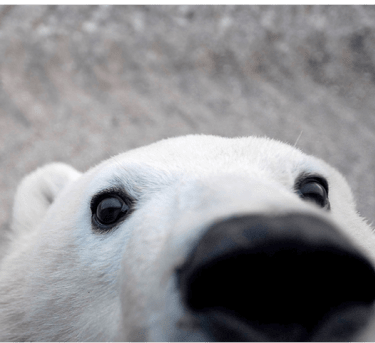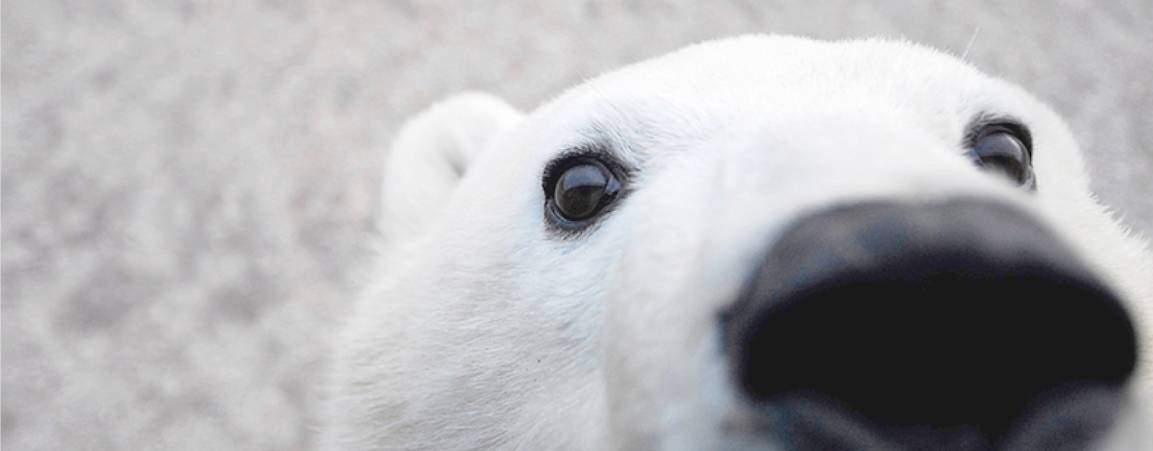We talk a lot about polar bear mothers, but what about polar bear dads? They may father a few cubs, rarely many. Many never know the joy of fatherhood during their tough, solitary life. In any case, it’s unlikely that they’ll ever meet their offspring.
Everyone is smitten by a cute spring cub gambling along after its mother while keenly exploring the newness of everything. And what could be more inspiring than an adult female searching the sea ice for seals to gorge on so she can double her weight, then undergoing eight months without eating while hunkered down in a snow den to give birth and rear those adorable cubs? However, spare a thought for a key part of the “family”: adult males. It’s not that male polar bears are deadbeat dads, it’s more that they just aren’t needed to rear cubs.
A mostly solitary life
Female polar bears spend most of their lives with other bears—first their mothers, a few lonely years as a subadult, then one litter of cubs after another. Males, on the other hand, lead a solitary life. While polar bear males are capable of fathering cubs quite young, very few get serious mating opportunities until they’re in their mid-teens. Younger males try to mate, and some do sire cubs, but very few. We’re not sure if adult females reject younger males or if younger males are outcompeted by bigger, more dominant males. Either way, there are many lonely years for most males.
Tracking down a mate
Males spend the spring roaming over huge areas and will move from mate to mate if they can.
The tracks of males hunting for love are distinctly different from those hunting for a meal. Hunting bears twist and turn searching for seals but mating males travel for long distances in an arrow-straight line. Why? It’s the most efficient way to cut across the tracks of other bears. Each time they encounter a track, a male makes a quick assessment: follow or not?
What are they looking for? We’re not sure if it’s scent from glands on the feet or possibly scent from hormone-rich urine that signals to a male that a track is worth following… but they know almost immediately and off they go. A female could be minutes away or days but the drive and intensity of males is impressive.
When males meet, it can get violent
Once the male catches up to a breeding female, he may or may not be deterred if another male has already found her. Males will tear each other apart to gain access to a breeding opportunity.
The most intense battles for a female occur between closely matched bears. Some fights are settled very quickly and a couple of blows results in a quick retreat from the loser. Other fights can be epic with broken canines from tooth-to-tooth smashing, lost eyes, massive wounds, and broken bones. If a polar bear wants to father the next generation, it’s a serious, and at times, debilitating process. With all the wear and tear, male polar bears live 3-5 years fewer than females.
I’ve seen the carnage that one estrus female can bring. Years ago I came across nine adult males courting a single female. There was blood all over the ice, one bear was so injured he couldn’t stand up, and many wounded bears were lying about. When we arrived in the helicopter, the biggest bear took off with the female. Females can mate with more than one male but most litters are sired by a single bear.
Following mating, the male’s rearing responsibilities are done. Everything now rests on the mother’s ability to hunt and fatten for the coming pregnancy. Poppa bear’s trajectory after a romantic encounter is vastly different from the mother’s but it’s eminently predictable: go find another mating opportunity.
So focused on mating, they neglect to eat
Of course, as the mating season progresses, there are fewer and fewer females that are unbred and the likelihood of finding the last mating opportunities is slim. At some point, the diminishing returns settle into the hormone-raging male’s attitude and his thoughts shift to food.
Throughout the mating season, males have largely ignored hunting even though it’s the prime feeding period. Looking for love has cost them significantly in terms of their stored energy reserves: mating season is akin to slimming season. By the time breeding females are pretty much gone, so is the hunting season and the sea ice is starting to break up.
We don’t have great insight into the late season feeding of polar bears but for some males, they’ve missed their opportunity to fatten. Every year when the bears move ashore, there are a number of very skinny males. These guys are often on their way out—survival through the ice-free period requires significant stored energy reserves and some older males won’t have that. Once the energy stores run out, some just curl up and die. I’ve found the remains of such bears. It’s poignant to ponder their passing and the life they lived, where they were born, how many cubs they might have fathered, how many seals they killed.
A social opportunity on shore
If a male makes it ashore in autumn in good condition, the situation is now vastly different. With no females to fight for or seals to squabble over, adult males can become very social. Along the coast of Hudson Bay, up to 14 males might be found in the space of an urban backyard. Such a gathering is properly called a “sloth” or “sleuth” of bears. The bears will lounge against each other in shallow pits. As the summer progresses, the younger adults will often pair up and play fight in what we believe is practice for real fights. Bears that might have ripped each other apart only months earlier now seem like lifelong friends. We don’t know if the bears recognize each other but I suspect they do. It would benefit them to know other bears and which ones they might be able to dominate and which they should avoid.
What if they do meet cubs?
Mothers with cubs will usually avoid males because they can kill cubs. Sometimes the males eat the cubs, but not always. There’s a lot of theory behind infanticide that ranges from simple nutritional benefit to reducing competition to obtaining mating opportunities. We’d expect males to only kill cubs they didn’t father, but how they might know this is unknown.
The life of a male polar bear is tough, and quite different from a female’s. Long periods of time alone punctuated by mating events that last days or weeks and then the bear equivalent of the guy’s night out: lingering on land, dreaming of sea ice and seals.

















